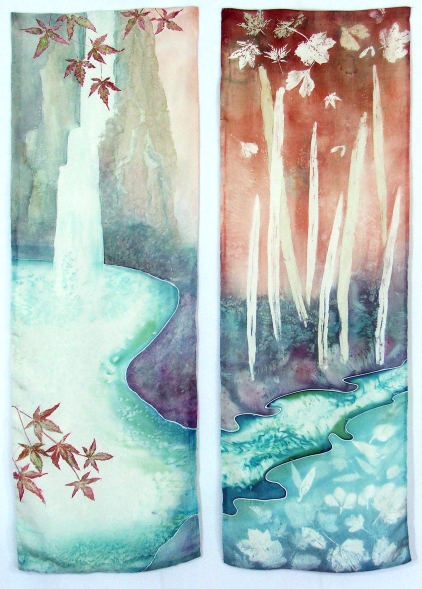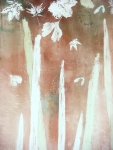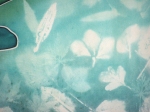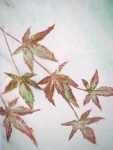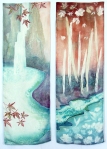This is the second post covering the making of a silk dyed Kimono for the “Imprints” exhibition at the Museum of Somerset in Taunton.
Stage two of painting the silk involved adding detail and richer colours to the design.
While the Rhinoceros teeth were my main inspiration, many other items in the museum fossil hall were used as inspiration for decorative details. These included ammonites, crinoids (also called sea lilies), gryphaea (devil’s toenails) and the ribs of an ichthyosaur. Some fossil cabinets had photographs of coral as a background, and these too found a place in the decorative scheme. Even the colour scheme of the Kimono was originally inspired by a picture of a red desert scene on the end wall of a display.

Fossil Crinoids or “sea lilies” were another source. The dye didn’t work as planned, and so some of the fine detail was lost
Some of the detail and colour intensity was lost in the second steaming process. This was partly due to my unfamiliarity with the dyes, but mostly due to fact that the silk was just too lightweight to take intense dye easily. If I make another Kimono like this I will certainly use a much heavier silk.

Each thread was then pulled tight and knotted before the fabric was steamed again to set the creases
After the final steaming to fix the texture, all the Shibori threads had to be carefully removed before the Kimono could finally be assembled.

Assembling the garment. The main body panels were nearly 4 metres long and everything was hand stitched
The “Imprints” exhibition is on at the Museum of Somerset, Taunton Castle, Castle Green, Taunton, from 10th October 2015 to 2nd January 2016.
The museum is open Tuesday to Saturday 10.00am to 5.00pm






















